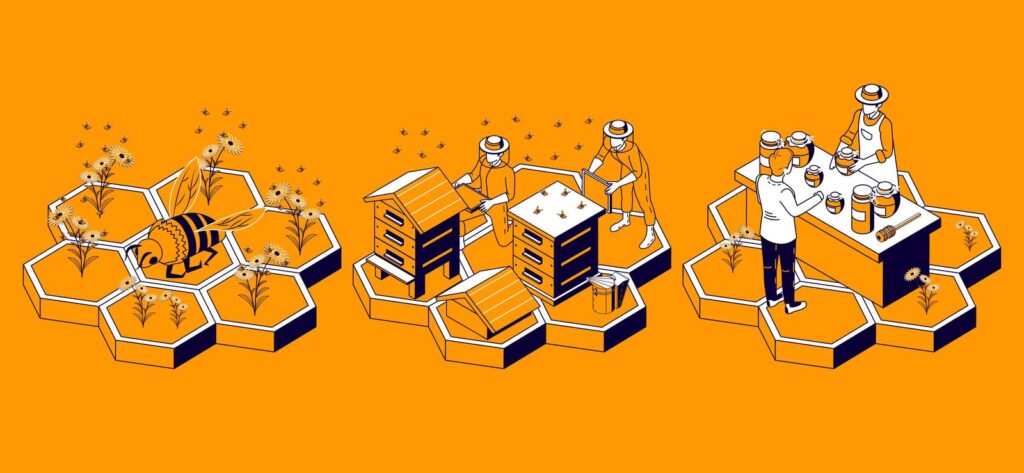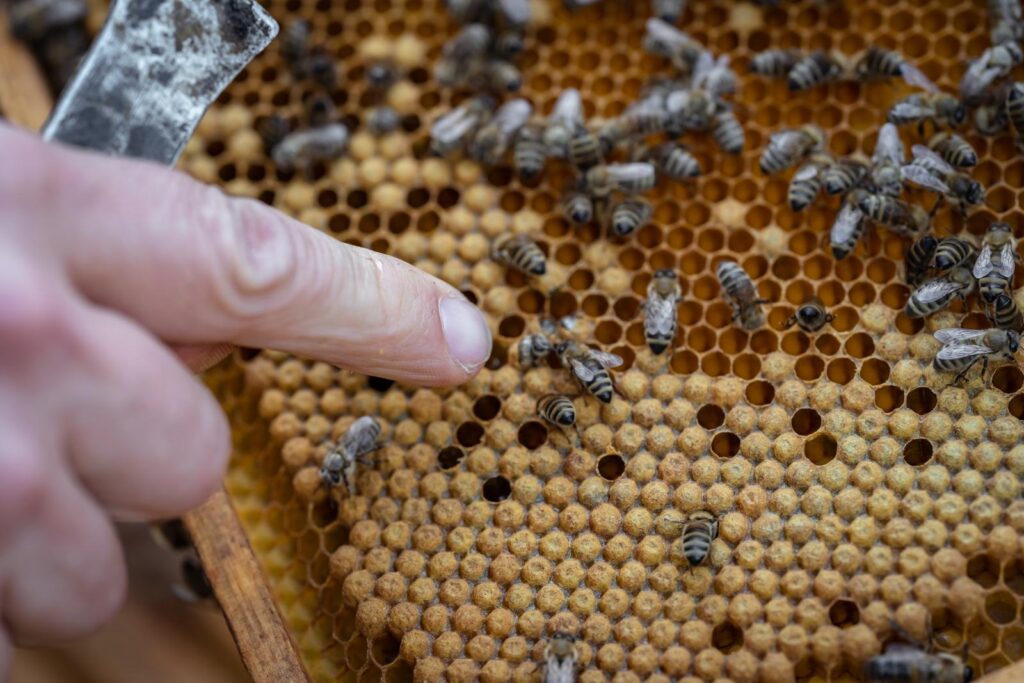Modern beehives were invented in 1852 by Reverend L.L Langstroth after he discovered that bees would begin to fill any space less than ¼ inches with propolis (a glue bees make from tree sap) and any space larger than three-eighths with comb, a phenomenon termed “bee space”.
Therefore, any space between three-eighths and ¼ inches are in range of acceptable bee space, with 5/16 inches deemed the most ideal. Langstroth designed an artificial hive according to these specific measurements, with a 5/16-inch space separating frames from hive parts.
Today, different companies make beehives and beehive components slightly differently but still according to the narrow specifications of bee space to ensure that components fit together tightly and do not leave too little or too much open space.
Consequently, combining this equipment can lead to unforeseen issues if you do not do proper research before investing. This is true for the purchasing of all beekeeping equipment.
This article will discuss some of the necessary and important components of beehive equipment such as the necessary hardware for beekeeping, the components of a hive box and the necessary protective gear.
Components of a Modern Hive
Anatomy of a Standard Hive
A standard hive is an essential piece of beekeeping equipment. They are usually made up of an outer hive box, a bottom board, at least two containing frames or a hive body, a few honey supers containing frames and an inner cover.
Hive Box and Supers
The hive body and supers are functionally interchangeable. Normally, the hive body is associated with the brood production area and is a large box which is placed over the bottom board. The supers are placed above and are available in three sizes. The largest is a ‘deep,’ an ‘Illinois’ is the medium size and a ‘shallow’ is the smallest size.
Brood Chamber and Supers
Two deep or three medium supers is necessary for the best possible brood-rearing space in a hive. Alternatively, one deep and one medium or one deep and a shallow would create the minimum amount of rearing space. Note that four to six supers are needed for honey production in a standard hive.
Hardware for Beekeeping
Hive Tools
Hive tools are used to jimmy apart parts of the hive bees often “glue” together with propolis. There are two kinds of hive tools used for this job: the standard hive tool and the Maxant tool/frame lifter.
The standard hive tool looks like a prybar with one hooked end and one flat end, while the frame lifter is designed to be inserted under a frame end while resting on the frame adjacent to it.
The beekeeper uses the downward-facing end of the tool as leverage to loosen the frame. This works well during inspections to remove the first frame in the hive.
Beehive Smoker
The beehive smoker comes in many assorted designs, standards of quality and can be made of different materials but have one main thing in common: their function. The smoker creates puffs of smoke that ‘calms’ the bees.
The smoke interferes with sensory reception and prevents the warning signals given off by the guard bees from reaching the colony, which helps the bees remain calm and not view the intruding beekeeper as a threat.
The smoker consists of a cylindrical chamber, a bellows, a hinged lid, and a spout. The fire is built in the chamber using fuel such as wood chips, dried grass, cotton cloth or leaves (not materials of animal origin like feathers or fur!).
When the lid is closed and the bellows compressed, a stream of smoke can easily be directed as needed. The smoke can also be released in tiny amounts to help direct bee movements, for example, to prevent bees from getting crush when removing frames.
Beekeeping Protective Gear
Beekeeping equipment also comprises the necessary protective gear needed to keep beekeepers safe. Different beekeepers wear several types, styles and amounts of gear. Some wear as much gear as possible, while others wear truly little gear. This can be heavily influenced by the beekeeper’s experience, confidence, the activity being done and the temperament of the bees.
Hats and Veils
Protecting the face and neck is extremely important because stings to these areas can be extremely painful and dangerous! Veils are made of protective mesh of either fabric or wire, and usually are attached or attach to the beekeeper’s hat or helmet. They protect the face while providing the beekeeper with an essential view as they work.
There are three main types of veils, namely: the folding veil, the round veil, and the square veil. Each offer different levels of protection, visibility, comfort and affordability. Choosing a veil depends on which most fits your needs.
Remember, any veil is better than no veil!
Helmets
Beekeeping helmets are usually adjustable and made of either plastic, metal, or tight-weave mesh. Helmets can attach to veils and provide space that keeps the veil away from the face.
Bee Suits
Bee suits are the uniform of a beekeeper and should protect the beekeeper’s entire body from a bee sting. Long, loose, khaki bottoms and shirts are preferred. Avoid material derived from animals because this could cause a bee to become defensive.
Moreover, boots should cover the ankles and should be used to secure the bottoms of the pants to prevent a bee getting in. The sleeves of the shirt should be similarly secured with wrist straps or tape.
Gloves
Many experienced beekeepers prefer not to use gloves, but they can be extremely helpful for beginners who may not be as familiar and comfort handling bees. Most gloves are made of leather, plastic or cloth and usually extend until and are secure around the elbows.
Though bees CAN still sting through gloves, they prevent the stings from becoming lodged in the skin which reduces the overall pain of a sting for the keeper.
In Conclusion…
Beekeeping equipment includes all the necessary tools, hive components and protective gear needed to ensure safe, productive, and successful beekeeping.
Make sure that you have done your research before you buy your equipment, especially the hive components! For the rest, consider your needs to decide which equipment will best serve you in your beekeeping endeavours.
Happy shopping!


